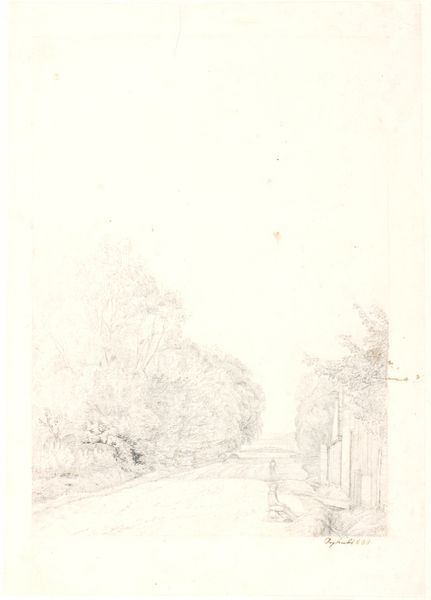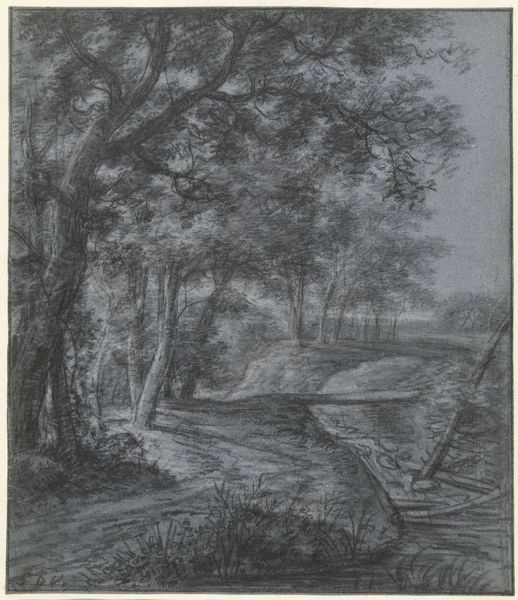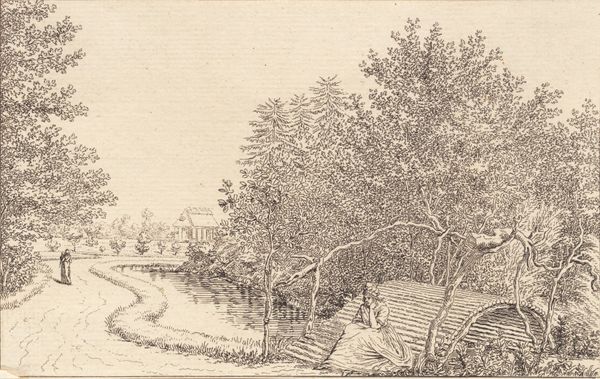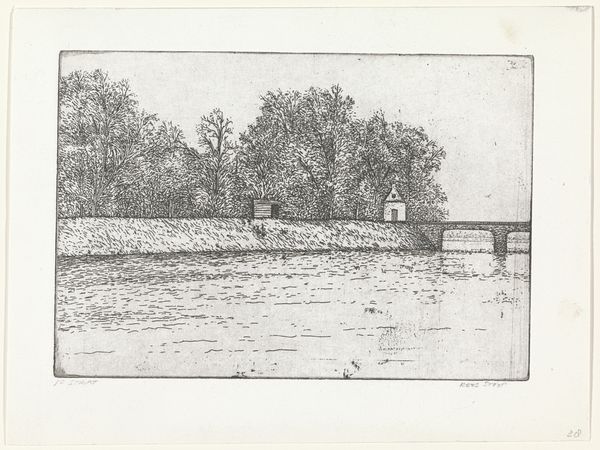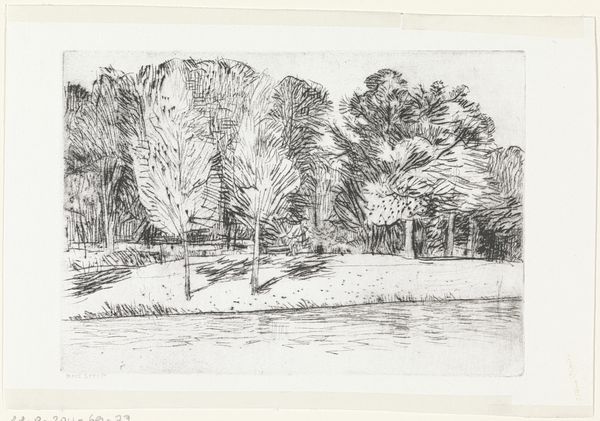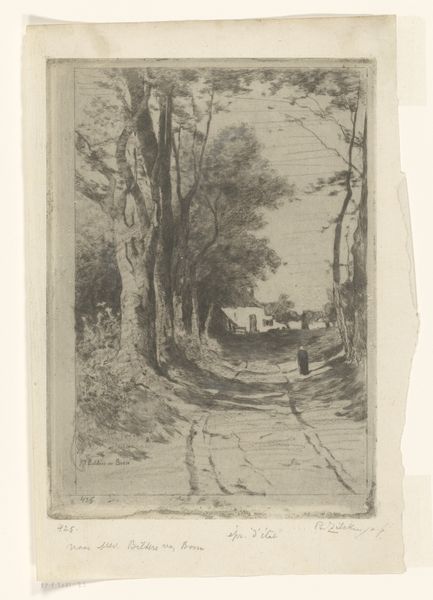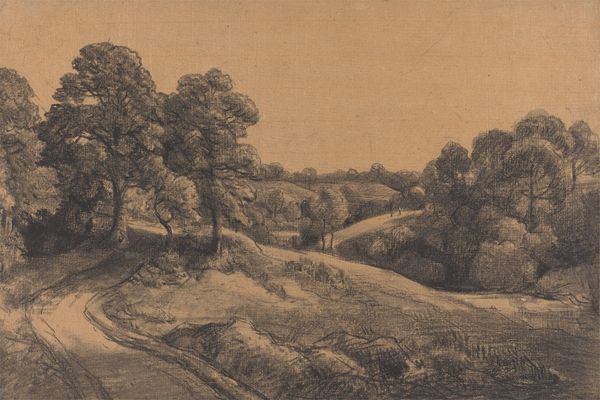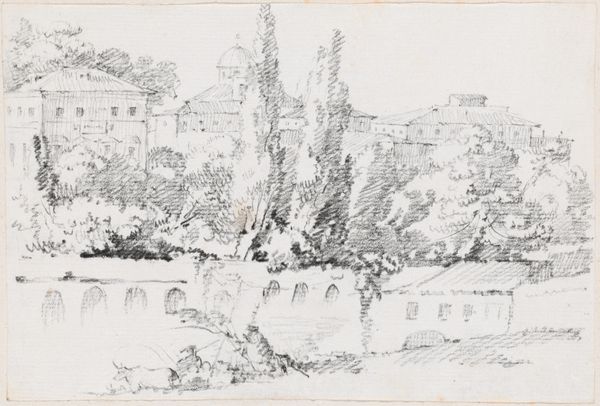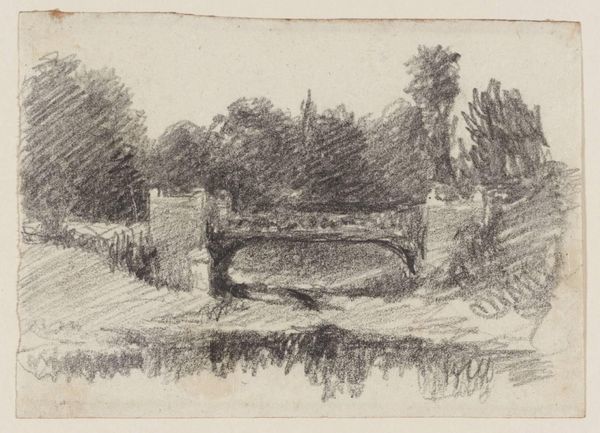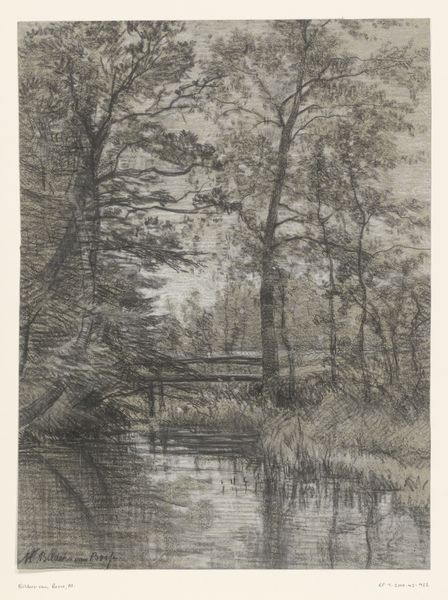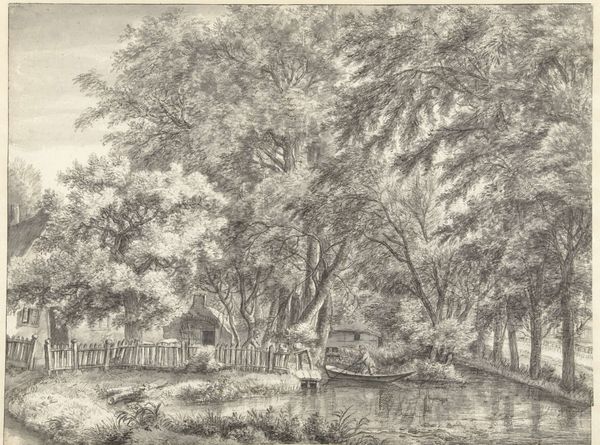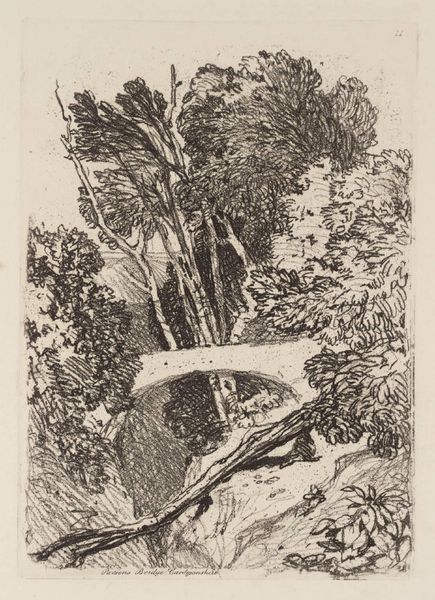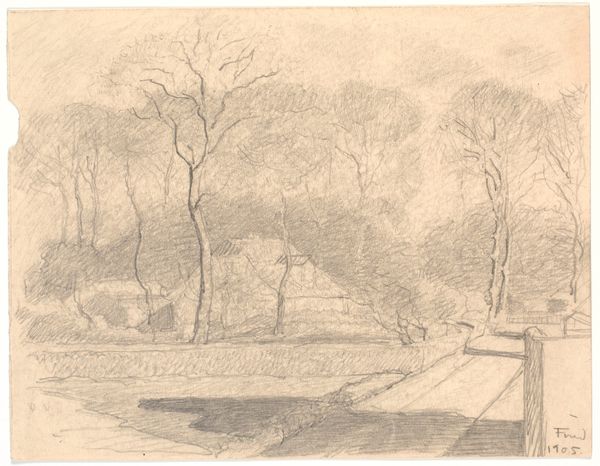
Dimensions: 10 3/16 x 6 7/8 in. (25.88 x 17.46 cm) (image)
Copyright: No Copyright - United States
Curator: Before us hangs "Prominade des Tristes," a 1908 graphite-on-paper drawing by Alexandre Lunois, currently held in the collection of the Minneapolis Institute of Art. Editor: It's evocative. Melancholic even. The stark contrasts, achieved purely through the application of graphite, suggest a rather pensive atmosphere. The eye is drawn up the composition, almost reluctantly. Curator: Precisely. Notice how Lunois has structured the composition, leading the viewer's eye from the shadowed bridge in the foreground to the distant architectural elements on the hilltop. The linearity and tonal values, varying from the delicate grays of the sky to the densely packed shadows, establish a palpable sense of depth. This rigorous control creates a compelling tension across the picture plane. Editor: The bridge, almost like a threshold, seems laden with the weight of its own history. Bridges often symbolize transitions, or connections – a hopeful image, but here, combined with the title, it almost implies a solitary crossing into sadness, doesn't it? There are fortifications visible in the upper background and what appears to be water under the bridge. One can see visual parallels drawn between these. Curator: Indeed, the bridge acts as a crucial structural component within Lunois’s artistic system, uniting separate zones, reflecting its significance. His masterful use of graphite facilitates both precise linear rendering and subtle tonal gradations that support a cohesive totality. This synthesis generates visual rhythm throughout the design. Editor: Thinking about it further, the bridge also directs the viewer to consider what came before it, to reflect on the meaning it embodies for those who would "Prominade" or dwell, upon these paths. There seems an overt sadness throughout; a certain bleakness, the kind evoked through certain Impressionistic scenes with no inhabitants. Curator: Lunois's capacity to transform landscape through nuanced manipulation of light and form produces an aesthetic encounter for informed viewers that engages the visual cortex and promotes profound consideration. I find the composition wonderfully complete, even despite what feels tonally restrained within this artwork. Editor: Ultimately, I feel it draws us to reflect on the transient nature of even the grandest structures and scenes. Thanks to Lunois’ artful symbolism. Curator: Indeed. It's an elegant and effective summation, drawing awareness back to the art’s enduring formal significance.
Comments
No comments
Be the first to comment and join the conversation on the ultimate creative platform.
